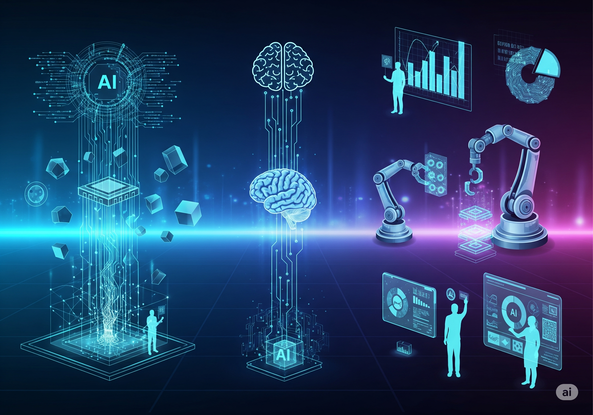
Top 15+ Artificial Intelligence Project Ideas in 2025!
Introduction
Artificial Intelligence (AI) continues to transform industries and drive innovation, making it one of the most in-demand fields in 2025. Whether you're a student, a beginner in tech, or a working professional looking to expand your portfolio, building real-world AI projects is the best way to gain hands-on experience and stand out.
This blog highlights 15+ trending AI project ideas for 2025 that are practical, impactful, and aligned with industry needs. From machine learning and natural language processing to generative AI and computer vision, we've covered a diverse mix of beginner, intermediate, and advanced projects.
Why Build AI Projects in 2025?-
✅ Hands-on Skill Development
Learning theory is important, but real growth happens when you build projects and solve real-world problems. -
✅ Portfolio & Resume Booster
Recruiters love seeing AI projects that show problem-solving and creativity. -
✅ Keeps You Updated with AI Trends
Projects based on ChatGPT, AutoML, edge AI, or ethical AI show that you're aligned with 2025 advancements. -
✅ Great for Freelancing or Startups
Many of these project ideas can become MVPs (minimum viable products) or client deliverables.
Build a tool that parses resumes and ranks them based on job descriptions using NLP. Integrate with GPT or BERT models for smart matching.
2. Fake News Detection SystemUse machine learning and text classification algorithms to identify fake or biased news content based on linguistic patterns.
3. AI-Based Virtual Career CounselorDevelop a chatbot that offers career guidance based on user skills, interest, and market trends using a combination of NLP and recommendation systems.
4. Generative Art CreatorLeverage generative AI models like DALL·E or Stable Diffusion to create unique art based on user prompts. This is huge in 2025's creative tech space.
5. AI-Powered Language TranslatorCreate a real-time language translation app using transformers like MarianMT or mBART for multi-language support.
6. Predictive Healthcare AssistantDesign a model that predicts diseases based on symptoms and medical history. Ensure ethical AI and privacy measures are included.
7. Autonomous Chatbot for Customer ServiceTrain a domain-specific GPT-based bot that can handle common queries, book appointments, or raise tickets.
8. AI for Stock Market ForecastingUse historical data, LSTM, or reinforcement learning to predict stock trends or suggest portfolio rebalancing strategies.
9. Emotion Recognition SystemUse deep learning and computer vision to recognize facial expressions or tone of voice for applications in security or therapy.
10. Voice-Based Virtual AssistantGo beyond Siri/Alexa—build a personalized assistant using speech recognition and NLP models like Whisper.
11. AI Resume BuilderAllow users to input details and generate customized, ATS-friendly resumes using GPT-like models and keyword optimization.
12. AI-Based Expense TrackerUse machine learning to categorize expenses and predict future spending, offering financial advice and reminders.
13. Intelligent Tutoring SystemDevelop an AI tutor that analyzes student performance and offers adaptive learning resources.
14. AI-Powered Code GeneratorUse tools like CodeT5 or Codex to auto-generate code snippets based on natural language input.
15. AI Social Media Post GeneratorHelp marketers by generating image captions, hashtags, and content calendars using generative AI.
16. Smart Traffic Management SystemUse real-time video feeds and ML models to optimize traffic signals and reduce congestion.
Bonus Tip: How to Start an AI Project in 2025-
Choose a Niche – Focus on an industry or use case you're interested in.
-
Select the Right Dataset – Kaggle, HuggingFace, and UCI offer quality open datasets.
-
Pick Your Tools – Use TensorFlow, PyTorch, OpenAI APIs, and HuggingFace Transformers.
-
Follow Agile Development – Build a simple prototype first, then scale.
-
Test for Bias & Ethics – Ensure your models are transparent and inclusive.






